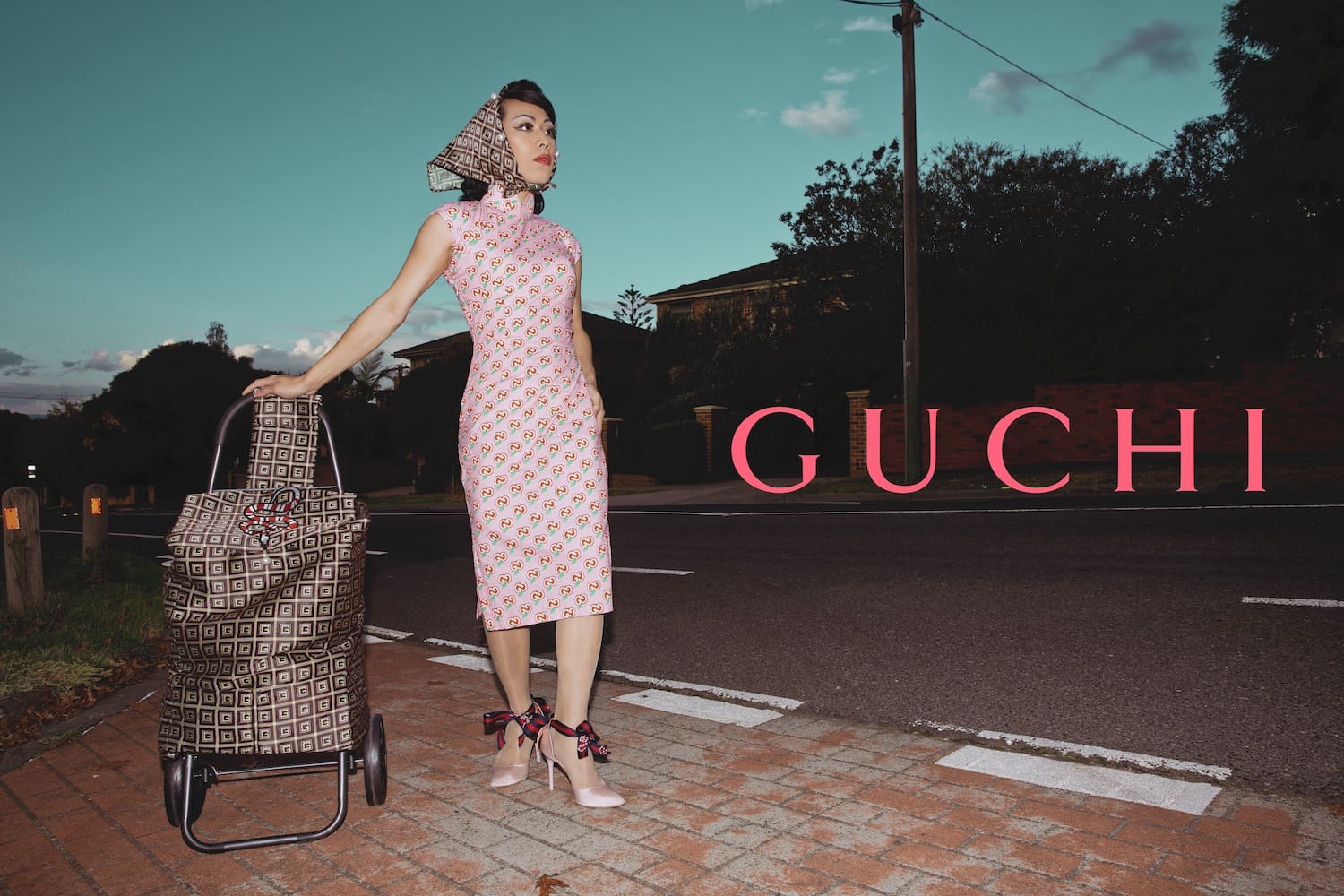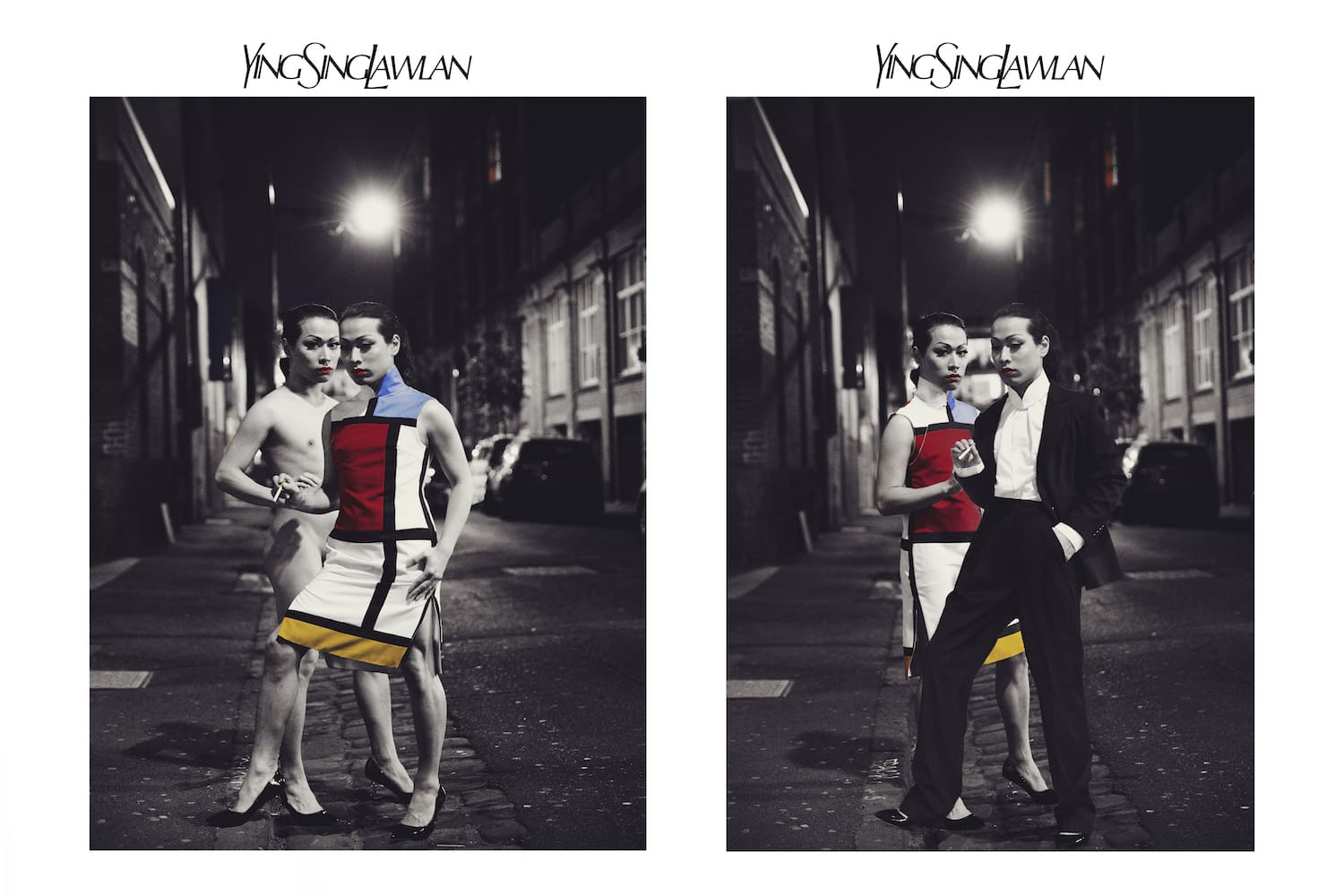My first encounter with this enigmatic practice was in So’s Honours year at the Victorian College of the Arts, where he lip-synced to his AirPods at the Ian Potter Gallery in traditional Chinese opera costume. More recently, as a curator I commissioned a roving drag performance between Bendigo Art Gallery and La Trobe Art Institute in regional Victoria. It’s gratifying to follow the practice of an artist such as So over five years, witnessing themes solidify and new directions emerge, tracing threads of history and futurity. There’s the performance of gender, the allure of advertising, a layering of cultures, and always the thrill of camp.
We speak over Zoom about So’s two upcoming exhibitions Queen of Begonias & Hai Kot Tou at Art Gallery of Ballarat, as part of the Victoriawide photography festival, PHOTO2024.
Amelia Wallin: To begin, could you please tell me about the photographic works you’ll be presenting at the Art Gallery of Ballarat?
Scotty So: The Art Gallery of Ballarat has these outdoor light boxes, and the director, Louise Tegart, wanted me to do something with those. Immediately, I thought of an older series of works that I’ve made that have never been shown altogether. Because the works reference fashion imagery, they would be perfect for the light box. Then it adds a layer to the functionality [of the lightboxes], playing with the language of advertising.
AW: The series is called Hai Kot Tou, and it clearly references fashion photography—what are the origins of these photographs?
SS: They were made with the inspiration of my grandmother, wearing her fake Burberry scarf, looking elegant, but with her shopping trolley for going to the market in Hong Kong. Around that time there was a trend of Chinese tourists wearing all monogram, from head-to-toe monogram. I was very inspired by the way that it almost looked like camouflage. I wanted to see how it would go together with the traditional garment, as well as [something nontraditional such as] the trolley.
AW: Do you have mood boards and old issues of Vogue for inspiration?
SS: Three of these images are replicas or recreations of famous fashion photography. For the others I went to places with a high migrant population, like Preston Market, and in those cases it was letting the environment lead the shoot.
AW: And what about the other work you will be exhibiting?
SS: I was invited to respond to the Ballarat Begonia Festival, and its history. Immediately I was in love with the idea of the pageantry. As part of the Begonia Festival there was a pageant every year from the 50s to the 90s, where a woman would be crowned “Queen of the Begonias”. I think that Queen Elizabeth visited the festival, it was such a major event.
Even though Ballarat was a major city in gold rush history, with high numbers of Chinese people in the population, of course all the Queens of the Begonias are white. So, I came up with the idea of creating a character who is a ghost of the past. A delusional woman who always wanted to win, so she comes back to haunt the town and to be a contestant. The video will be filmed like a trailer for a longer movie, and will combine archival footage with a voice-over.
AW: I know that costuming plays a significant role in your work. What will the costuming be for this? Did you look to the archive for inspiration?
SS: In the archival images, lots of the contestants were wearing white cocktail dress with a crown, so the costume will be similar to that. Ballgown attire, with gloves, like something you would see in the 50s and 60s. I’m interested in referencing that history in a way that it’s not about criticising, because we became who we are because of the past. But then, at the same time, using the past to look into that history.
AW: It sounds like the video makes room for two histories, two Queens of the Begonias, to coexist. The figure of the ghost feels really apt.
SS: A lot of people in Ballarat know about the history, the pageantry and the festival—but many wouldn’t have seen it.
AW: You’re bringing back a communal memory.
SS: Yes, but at the same time, it’s camp, it’s gay, it’s queer. Ballarat has a queer festival—the Frolic Festival—so the work is connecting to that as well. It’s combining all these aspects of the community together, the drag with the pageantry, the present with the past.
AW: What do you hope audiences take away from these two different works?
SS: For Hai Kot Tou I would be really happy if people mistook the lightboxes for real advertisements, that would be perfect. It’s beautiful, but at the same time it’s ridiculous. I also hope Queen of Begonias could encourage audiences to look into the history of Ballarat. I think that would be amazing if the work can encourage people to discover more of their past.
AW: Not just from a place of nostalgia, but from a more complicated position?
SS: Yes, from a position of understanding. A desire to understand where they fit in, whether they are migrants, First Nations or descendants of colonisers. We are each standing in a different point of view: how do we look into that past?
Queen of Begonias & Hai Kot Tou
Scotty So
Art Gallery of Ballarat (Ballarat/Wadawurrung Country)
On now—4 April
This article was originally published in the March/April 2024 print edition of Art Guide Australia.



